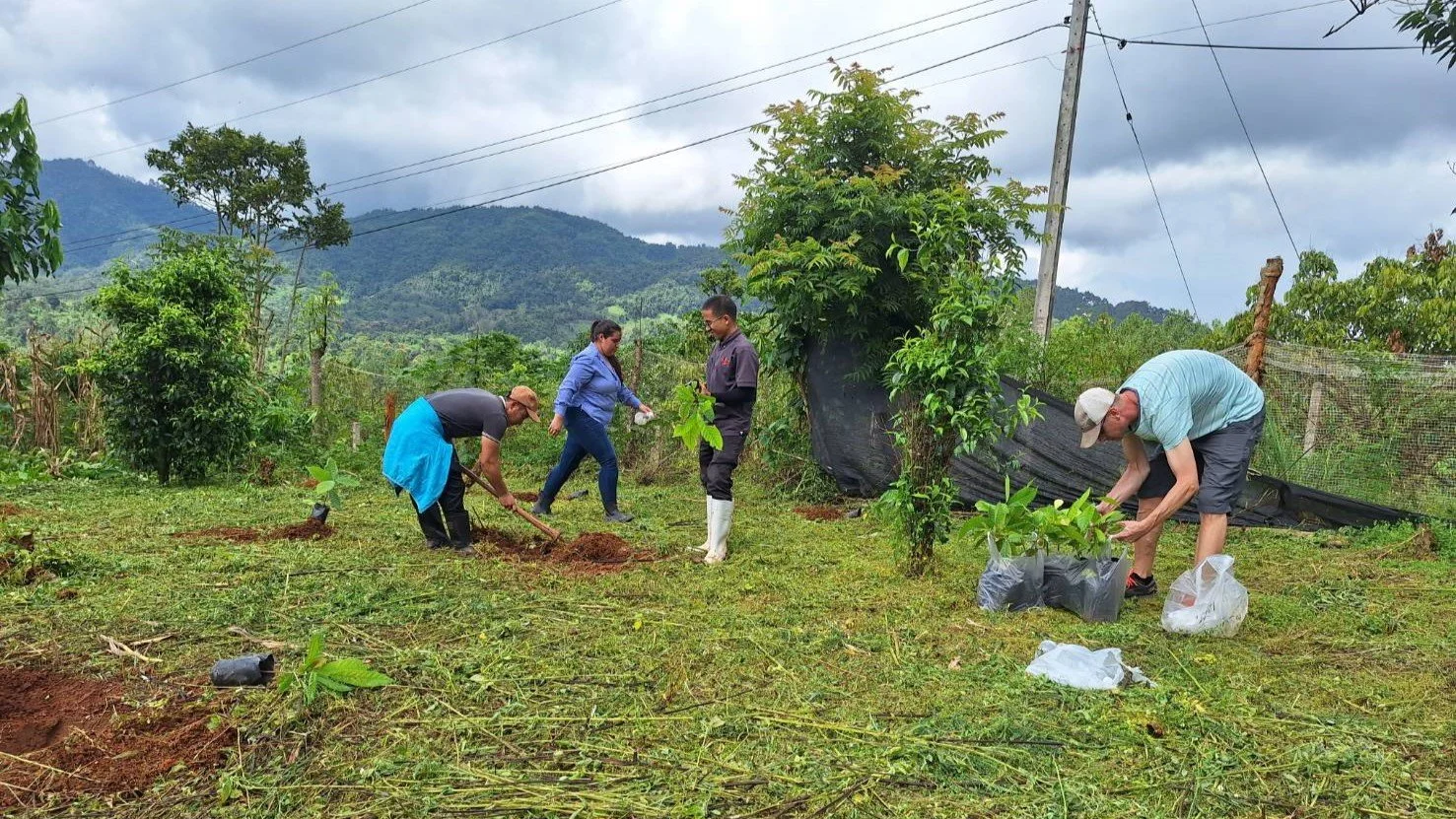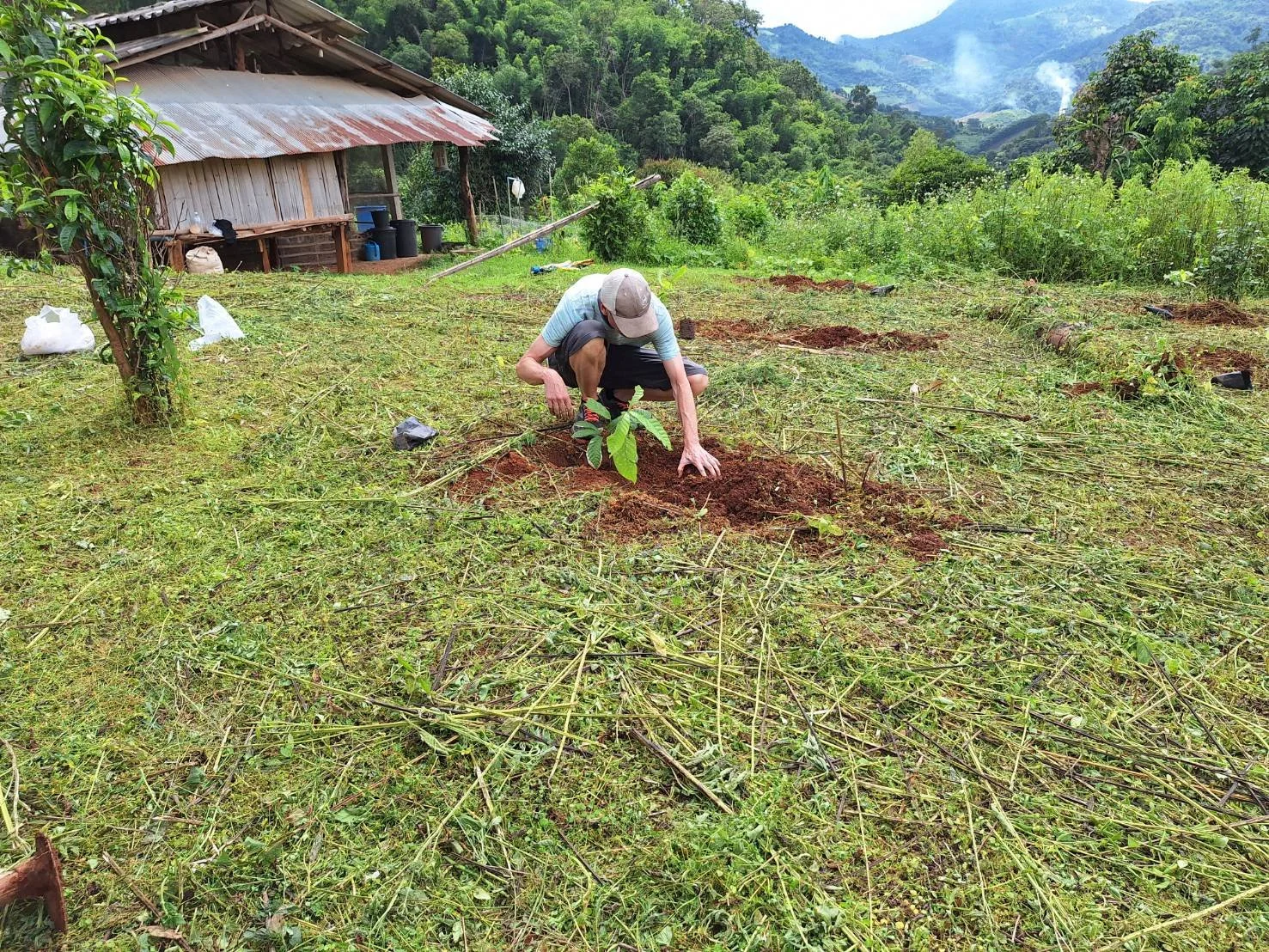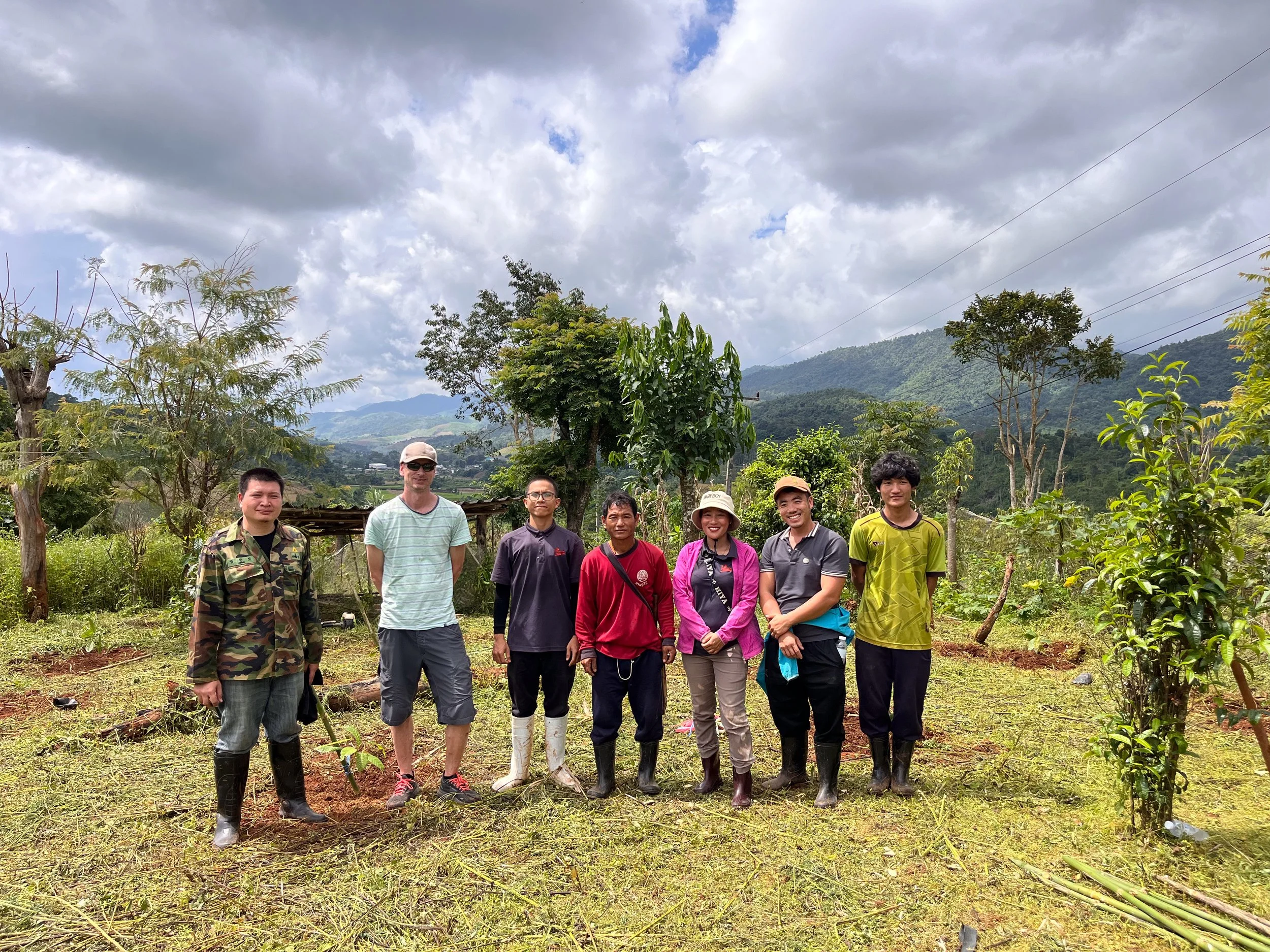Wawee Valley Project Update #1
Cultivating change with chocolate and chicks
Restoring over 100,000 acres of land is no mean feat. To focus our efforts, we discussed what success looks like across the 18 months. We agreed that the priority was to create fertile, climate-resilient soil to support sustainable farming practices and improve local livelihoods.
We're excited to share our key achievements since project inception:
Model farm development: The Wawee Valley Foundation (WVF) team has been busy developing model farms with the help of a local agronomist and reNature.
Agroforestry integration: Farmers have enthusiastically embraced agroforestry practices, planting over 150 cacao trees to provide shade for their chickens, increase biodiversity, and improve soil health. The team decided to plant Chumphon, the most common cacao varietal, based on its ease of management and processing and a higher profit margin than Robusta coffee.
Compost innovation: The WVF team has set up an experimental compost site, testing several variations to determine the most suitable implementation. Quality control remains a top priority, and they have been sending samples to a local lab to test microbial activity and NPK values. The vision is to set up an experimental' food jungle' to test the compost and for future biochar production.
Community confidence: Addressing concerns about the project's impact on livelihoods is crucial. We're working hand in hand with farmers to select the most suitable cash crops and ensure their confidence in the process.
Youth engagement: One of our success metrics is the number of young people staying in the village to pursue farming. We hope the project will engage more young people, offering hope for future economic well-being.
Stay tuned for the next on-the-ground updates!





